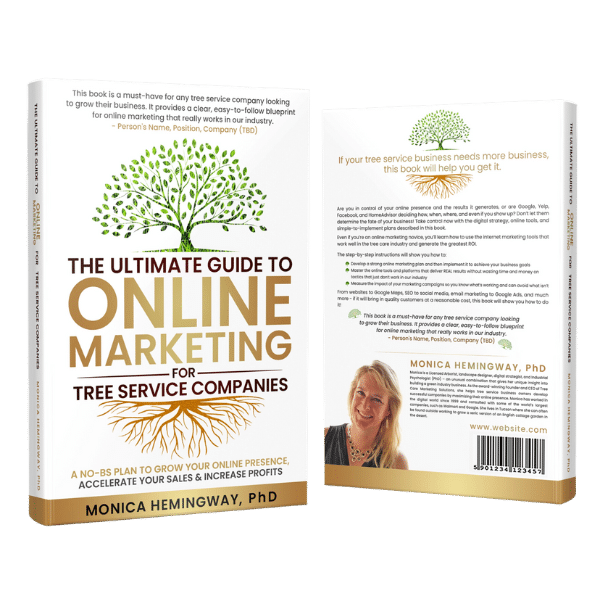Picture this: A homeowner’s massive oak tree just split during a storm. They desperately need emergency tree service, so they grab their phone and search “tree service near me.” What’s the first thing they see? Reviews. And those stars next to your business name could mean the difference between landing that $5,000 emergency removal or watching it go to your competitor.
The Hard Truth About Reviews in 2025
Let’s cut to the chase with some fresh data from GatherUp’s 2025 consumer survey: 85% of consumers trust local business reviews, and an overwhelming 99% consult reviews before choosing a business.
But here’s what might surprise you – word-of-mouth recommendations are still king, with 45% of consumers relying more on personal recommendations from family and friends over online feedback.
This is why you need a two-pronged approach:
- A robust review management strategy to attract new customers who don’t know you yet
- A formal referral program that turns satisfied customers into active promoters. When Mrs. Johnson tells her neighbor about your excellent pruning work, that carries more weight than even your best Google review.
For now, let’s focus on reviews.
Why Reviews Are More Important Than Ever
According to Search Engine Journal’s latest research, 59% of consumers are spending more time reading reviews than they did five years ago. This surge isn’t just about increased screen time – it reflects fundamental changes in how people make buying decisions. Here are a few examples:
- Reviews now appear everywhere customers look for local services. Beyond traditional platforms like Google Business Profile (which is seen as the most trustworthy review platform) and Yelp, customers are checking Nextdoor for neighborhood recommendations and Instagram (where 52% of consumers now look for local business recommendations).
- Google has also increased the prominence of review content in search results through local justifications and featured snippets, meaning your reviews influence whether customers even click through to your website.
- 60% of people trust what customers say about a business more thanwhat a business says about itself. It doesn’t matter how well-crafted and SEO-optimized your website or social media pages are; people still trust what other people say about you (through online reviews) more than what you say.
- The economic uncertainty of recent years has made consumers more careful about who they hire for significant investments like tree care. When you’re charging $3,500 to remove a tree near someone’s house, they want proof that you’ll do it safely and professionally.
- Post-pandemic consumers have also grown more reliant on digital research before making service decisions, having become accustomed to thoroughly vetting businesses online.
- Our own research on LSA costs shows that reviews are also critical to the success of your Local Services Ads campaign. The more reviews you have, the more leads you’ll receive and the lower the cost per lead. Reviews will literally make – and save – you money!
What Customers Actually Look At (Hint: Not Your Overall Rating)
Here’s a reality check for owners obsessed with maintaining a perfect 5-star rating: only 23% of consumers focus on your overall star rating when making decisions. Instead, according to GatherUp’s 2025 consumer survey, here’s what really matters to your potential customers:
- 67% focus on your most recent reviews
- 50% look at your lowest-star reviews first
- 73% want to see that you respond to positive reviews
- 79% expect responses to their complaints
Why this shift away from overall ratings? Because smart consumers understand that a 4.8-star average might include reviews from five years ago, when your business operated differently. They want to know how you’re performing right now, not historically. A homeowner researching tree services doesn’t care that you had great reviews in 2020 – they want to see that your most recent customers were satisfied, that you’re actively engaged with feedback, and how you handle things when they go wrong.
This means your review strategy should focus on generating a steady stream of fresh reviews rather than protecting a perfect rating. A 4.6-star rating with 20 recent reviews and thoughtful responses will outperform a 5.0-star rating with only five reviews from last year.
Your reputation is being shaped whether you’re actively managing it or not. The question is whether you’ll take control of that process or leave it to chance.
Action Steps: Building Your Review Strategy
ASK for a Review!
It always amazes me how many tree service companies don’t ask their customers for a review! I’ve heard every excuse in the book, from “We don’t want to annoy our customers” to “It’s too hard to keep track of who we’ve asked” and “No one actually leaves reviews anymore.” But, if you do good work, none of those are valid reasons.
According to recent research on review management, 83% of customers will respond to review requests, and 47% prefer being asked in person right after the job.
You can’t leave reviews to chance. If you don’t ask, you simply won’t get reviews …
Timing is Key
This means your crew should be trained to ask satisfied customers for reviews during the final walkthrough, when the customer is seeing the completed work and feeling most positive about your service.
Don’t wait until you’re back at the office to send a review request – have your crew leader ask while walking the property with the client during the final inspection.
Follow Up with Reminders
Follow up with an automated text or email request within 24 hours – and follow-up reminders – to capture those who weren’t present when the job was completed and remind those who were. But that personal ask at the moment of satisfaction is your highest-converting opportunity.
Focus on Google but Monitor Everything
You also need systematic monitoring across multiple platforms. While Google Business Profile should be your primary focus, customers are increasingly leaving reviews on Nextdoor for neighborhood recommendations and checking Instagram for visual proof of your work quality. Set up alerts for new reviews across all platforms so you can respond within that critical 24-hour window.
Systematize the Review Request Process
Ideally, you’ll want to use a dedicated review management tool that:
- Automatically requests reviews at the right moment
- Monitors all review platforms in one dashboard
- Alerts you to new reviews needing responses
- Tracks review performance metrics
- Generates reports to identify trends
- Displays reviews on your website
Whether you use a platform like Reputation Builder or another review management system, the key is consistency and automation. The best systems will send review requests via text message (which typically have higher response rates than email), follow up with non-responders, and even help you create marketing content from your positive reviews to display on your website and social media.
The goal is to create a systematic approach that doesn’t depend on remembering to ask for reviews or checking multiple platforms daily. When reviews become automatic, you can focus on delivering the exceptional service that generates positive feedback.
Manual review management simply isn’t sustainable as your business grows.
Every positive review with a thoughtful response is like having a satisfied customer standing in their yard, telling their neighbors about your great work – except this yard is visible to everyone in your service area, 24 hours a day.
Respond to Reviews (Yes, All of Them)
92% of consumers believe that responding to local business reviews is part of providing good customer service, and 82% are more likely to choose a local business that is actively responding to its reviews. Given these stats, you simply can’t afford not to respond to online reviews!
Every review response should be crafted with future customers in mind, not just the person who left the review.
Responding to Positive Reviews
For positive reviews, respond within 24 hours with specific thanks that reference details from their review. Instead of a generic “Thanks for the review,” try something like: “Thank you for trusting Acme Tree Service with your oak pruning, Mrs. Johnson. We’re glad our certified arborist could safely remove those storm-damaged limbs while protecting your prized hydrangeas.”
Responding to Negative Reviews
For negative reviews, the approach is even more critical. Research shows 73% of unhappy customers will give you a second chance, but only if you handle their complaint correctly. Every negative review response needs:
- a sincere apology (not a defensive explanation),
- acknowledgment of their specific concerns,
- a clear offer to make things right, and
- contact information for offline resolution.
Avoid the temptation to explain operational improvements in your public response. Only 34% of review readers value detailed explanations about what you’ve changed. Instead, focus on the apology and resolution offer, then handle the detailed discussion privately.
Respond Within the Critical 24-Hour Response Window
Let’s be crystal clear: you need to respond to reviews within 24 hours. Period. While younger customers might be more patient (surprisingly), 46% of customers aged 45-60 expect a response within one day. Given that this age group often represents the primary customer base for tree care companies – established homeowners with mature trees and the income to invest in professional tree care – quick responses are non-negotiable.
Think of review responses as customer service conversations happening in public. When you respond quickly and professionally, you’re not just addressing that specific customer – you’re showing future customers how you handle communication and problems.
The Bottom Line
The numbers are clear: Reviews aren’t optional anymore for tree care companies – they’re essential for growth. With 59% of consumers spending more time reading reviews than ever before, and 92% considering your responses part of good customer service, you need a systematic approach to generating, monitoring, and responding to reviews.
Every day without a review strategy that’s followed by all members of your team is a day of lost opportunity. While you’re hoping customers will organically leave reviews, your competition is actively requesting them, responding professionally, and using review content to attract more customers. Are you?
Want to learn more about implementing a review management system for your tree care business? Ask us about Reputation Builder, designed specifically for tree care companies who want to take control of their online reputation.


